Rare WW2 Imperial Japanese Army Officer Type 98 Closed Collar Tunic 1940s
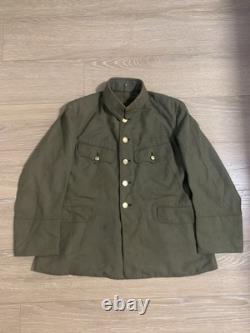
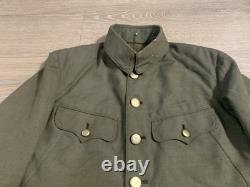

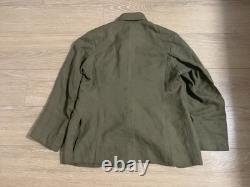
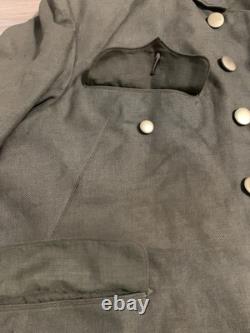
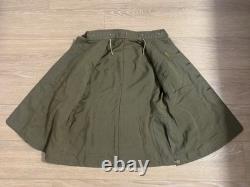
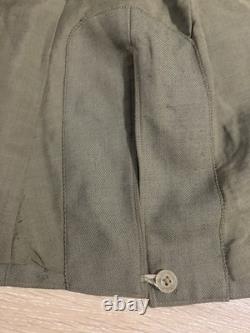
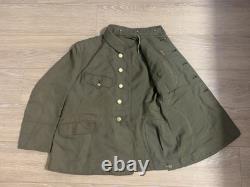


Rare WW2 Imperial Japanese Army Officer Type 98 Closed Collar Tunic 1940s. The traditional of junior officers finding individuality in military uniforms was continued as in the old style. The overall appearance of the uniform, such as the military cap checkered style, crash type, etc. , tailoring of the uniform, and fabric color, did not change much from the old style culture, but the "collar" revised in the new style had a high collar stand, but a smaller opening at the folded-down collar, reminiscent of the traditional stand-up collar, became popular. In addition, collars that were fixed sewn to the collar stand, snap buttons, etc. , and collars that were longer than the collar stand and covered the first button were also preferred. In the early days of the official school year 1938, collar insignia were slightly longer and thinner than the official standard, and for formal attire shoulder insignia, high-quality items (with stylish rounded gold lines) equivalent to regular shoulder insignia were preferred. Furthermore, the desire for good looks among junior officers was compounded by the abolition of the "military branch classification" (breast insignia) (except for each department and the military police) and the state of the country during wartime, which led to an increase in the number of foot officers lieutenants and warrant officers of the infantry, excluding generals and colonels; short boots and long sleeves shirt for full-time duty (casual dress), laced boots and short hakama with wraparound gaiters or leather gaiters for drills and field battles (military uniform), and short boots with wraparound gaiters for ceremonial military uniforms who wore long boots all the time, except when in ceremonial military uniform. Rank insignia changed from epaulettes to collar insignia. Based on the epaulettes standardized in 1912, only the shape was changed, with officers and warrant officers being parallelograms and non-commissioned officers and enlisted men being rectangular (commonly known as " zabuton "; later, woven products were also produced). The size was common, 18mm in height and 40mm in width.
The material was scarlet velvet, except for the legal officer and legal department officers and men who wore white velvet. The shape of the star on the collar insignia of officer and warrant officer was changed from the three-dimensional type used on epaulettes up until the standardization of 1930 to a flat type. In 1940, the rank of corporal was newly established (the rank of corporal first class was abolished), and the collar insignia was also established.
Now we currently in debt for that and forced to closed the shop until everything is better in (unknown) future. All things you see would be it last stocks one of the kind. And some items are limited times sale. "The last batch are arriving soon".(Once you don't see this sentence it means we have done all listing to all available items). Thank you for all your supports!


